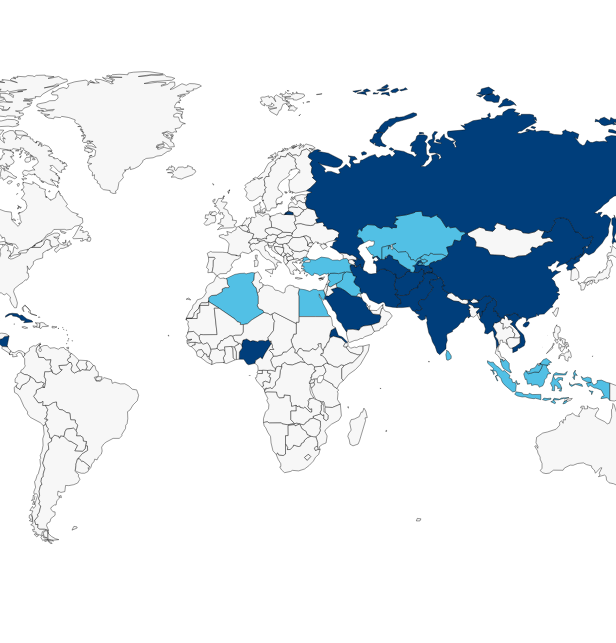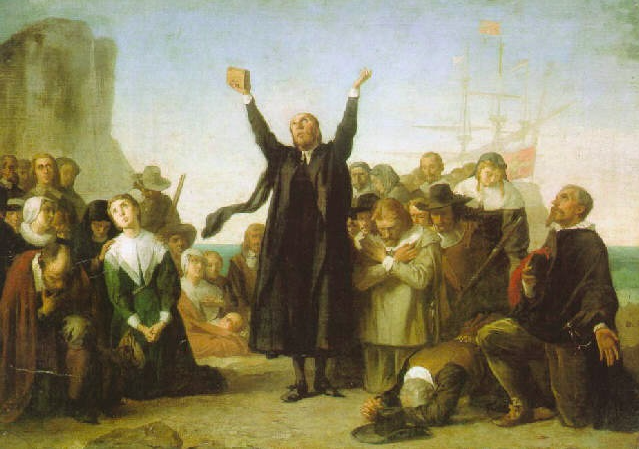In honor of President’s Day, this Cornerstone series asks contributors to explore the various approaches that presidents employed in their promotion of religious liberty throughout the centuries. Writers comment on presidential leadership (or lack thereof) on the issue of advancing religious freedom at home and abroad.
By: Allen Hertzke
President Clinton enjoys a permanent place in the annals of religious freedom because his signature is affixed to the two pivotal federal laws that shape policies over the protection of domestic religious liberty and efforts to promote it internationally. Indeed, these two laws—the 1993 Religious Freedom Restoration Act (RFRA) and the 1998 International Religious Freedom Act (IRFA)—serve as bookends of his presidency and constitute a considerable legacy of the Clinton era.
To be sure, the president did not take the lead in these initiatives. But his administration was deeply drawn into the advocacy struggles and debates over federal religious freedom policy, and he himself played a visible role in interpreting the significance and meaning of the “first freedom” in American domestic law and its application to international engagement.
The story of RFRA is well known. A broad religious coalition sought to reinstate high-level protections for domestic religious liberty in the wake of the Supreme Court’s abandonment of the “compelling interest test” for government burdens on free exercise. Not only did the legislation receive strong bipartisan support; it was enthusiastically endorsed by the Clinton administration and celebrated in a prominent bill signing ceremony on the White House lawn on November 16, 1993.
President Clinton’s eloquent speech at the ceremony bears reading today. Often the “signing of legislation” represents “a ministerial act” at the end of a “turbulent legislative process,” the president observed. But “this event assumes a more majestic quality” because it affirmed “the historic role that people of faith have played” in the nation’s history and constitutional order. Clinton proclaimed the free exercise of religion as the “first freedom,” which “originally sparked the development of the full range of the Bill of Rights.” He cited the value of religious civil society to the nation and the need to protect it from government intrusions. Referring to his own reading of Steven Carter’s book,The Culture of Disbelief, he decried how people of faith feel embarrassed to offer religious justifications for public policy concerns. In a direct rebuke to Rawls, he disclaimed that “the freedom of religion imposes on any of us some responsibility to run from our convictions.”
Clinton represented a moment of deep consensus about religious freedom, which by the end of his presidency would begin to break down. But even when the Supreme Court struck down the application of RFRA to the states in 1997, his administration sought, unsuccessfully, an alternative means to reinstate its protections.
Clinton’s speech in 1993 also recognized a key dynamic in the lobby campaign for RFRA—it forged new relationships of friendship and trust among erstwhile religious adversaries—that would play such a pivotal role in the campaign for subsequent international religious freedom legislation. But when that campaign emerged in the late 1990s, his administration would take a more skeptical posture.
As the groundswell to address global religious persecution built from the mid-1990s onward, the unlikely allies forged in the campaign for RFRA confronted the Clinton administration with a formidable challenge to its “latitude” in the conduct of foreign policy. Clinton initially sought to deflect or co-opt the movement by creating a State Department Advisory Committee on Religious Freedom Abroad. This action failed to stall momentum for legislation, as it only underscored what advocates saw as a weak American response to a global human rights crisis.
When initial legislation was introduced in 1997 by Congressman Frank Wolf and Senator Arlen Specter, the State Department and the White House pushed back. As I recount in Chapter 6 of Freeing God’s Children, the Clinton administration vigorously opposed Wolf-Specter. Madeline Albright charged that it did not “take into account the perspectives of others” and created an artificial “hierarchy of human rights.” State Department officials testified that it would elevate religious freedom above other concerns, complicate trade and foreign relations, and add another automatic sanction to an already overburdened set of foreign policy laws. Speaking to a group of evangelical leaders, Clinton himself argued that the rigid formula of automatic sanctions in the bill would lead officials in the “bowels of the bureaucracy” to “fudge” the facts to avoid creating diplomatic problems with strategic countries.
When the lobby movement coalesced around Nickles-Lieberman, an alternative bill that gave the president greater flexibility, the administration muted its concerns. But it still sought revisions to further blunt its impact or hoped it would stall. The legislation ultimately passed 98-0 in the Senate and by acclimation in the House. It was signed by the president on October 27, 1998, but without the fanfare of his unqualified endorsement of RFRA.
Indeed, one is struck with legalistic tone of the president’s “signing statement ” for IRFA. It explained in detail how the administration would interpret or qualify certain provisions, and it openly criticized one provision (on sharing communications on diplomatic negotiations with Congress) as infringing “on the authority vested by the Constitution solely with the president.” In this later case the president declared that he would “treat the language of this provision as precatory and construe the provision in light of my constitutional responsibilities to conduct foreign policy.” In other words, ignore it.
While this action illuminated the administration’s ambivalence about the law, President Clinton did announce his intention to appoint Robert Seiple, the former president of World Vision, to the position of ambassador-at-large for international religious freedom. Seiple’s gravitas helped launch the fledgling Office of International Religious Freedom within a skeptical State Department, an important if unappreciated Clinton legacy.
Ironically, the law that Clinton unabashedly endorsed (RFRA) has become more controversial over time, especially among Democratic liberals, while the law his administration resisted (IRFA) has grown in stature and potential impact. In a fascinating twist to our story, one of the central figures in both lobby campaigns, Rabbi David Saperstein, now serves as Obama’s ambassador-at-large for international religious freedom.
Allen Hertzke is David Ross Boyd Professor of Political Science at the University of Oklahoma and faculty fellow in religious freedom for OU’s Institute for the American Constitutional Heritage.
This piece was originally authored on February 17, 2015 for the Religious Freedom Project at Georgetown’s Berkley Center for Religion, Peace, and World Af
fairs.
THE RFI BLOG

Myths of Religious Nationalism in America and Abroad

France’s Olympic Hijab Ban Violates International Law And Exacerbates Tensions

RFI Briefs USCIRF on Lessons from 25 Years of U.S. Designating Religious Freedom Violators

Thought Police: Protecting the People from Prayer

A Religious “Delaware”: Establishing a State Haven for Religious Corporations
CORNERSTONE FORUM

Challenges to Religious Freedom in Iraq and the Critical Need for Action

Public Bioethics & the Failure of Expressive Individualism

Religious Liberty in American Higher Education

Scotland’s Kate Forbes and the March of Secularism


